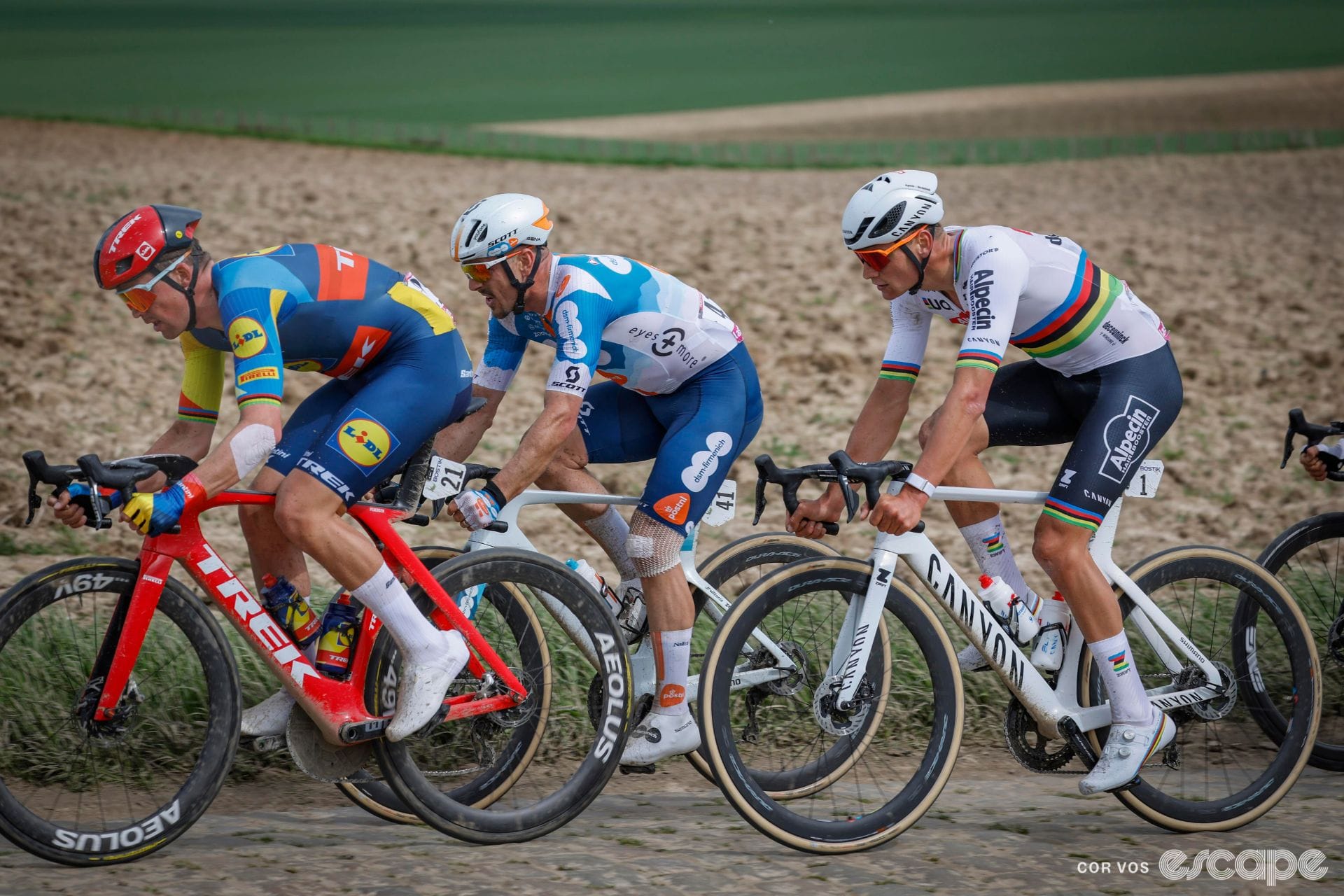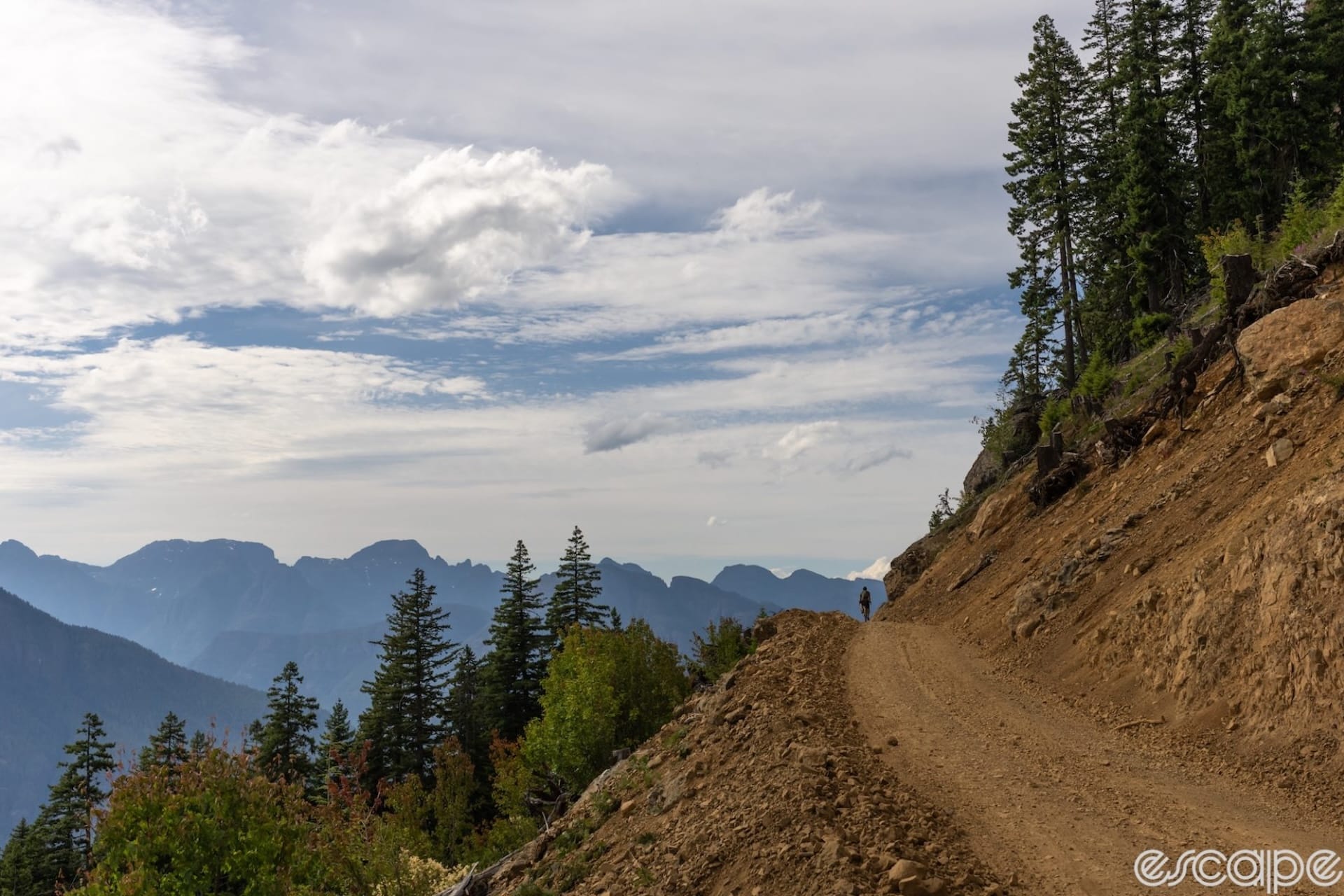As a kid, turning on the TV to watch Paris-Roubaix was only partly to watch the pros battle with the pavé of northern France. The real reason I loved to watch ‘The Hell of the North’ was to see bikes and equipment that reared their heads for this single day on the calendar.
Admittedly, my first memories of Roubaix aren't from all that long ago. I have vague recollections from the late 2000s, but my first vivid memory was Fabian Cancellara’s famous win in 2010.
Back then, aluminium rims were the norm; there were still some metal frames in the peloton. Handlebars that looked like they had enjoyed the buffet a little too much were a common sight, with plenty of riders deciding that an extra layer of bar tape would help dampen down the assault the cobbled sectors could inflict.
Cyclocross-style remote brake levers were easy to spot, and riders even sometimes opted for full cyclocross bikes, although more for handling than tire clearance, as 27-28 mm rubber was as wide as teams went even for Roubaix. And those were relatively tame interventions compared to the 1990s, which saw baroque frame designs like Steve Bauer's slack-geometry Merckx and two Bianchi suspension designs. Almost none of it ever saw production.
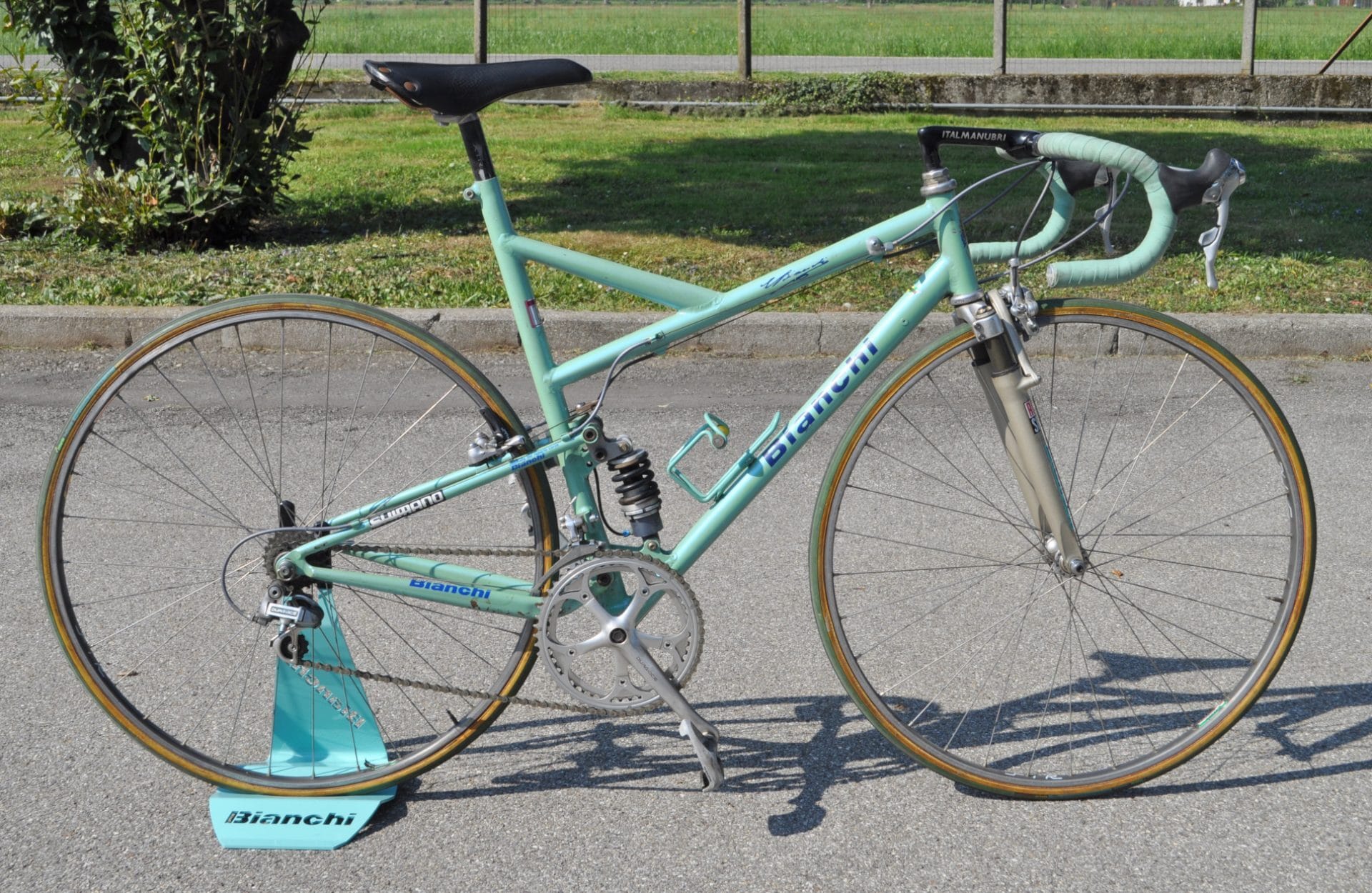
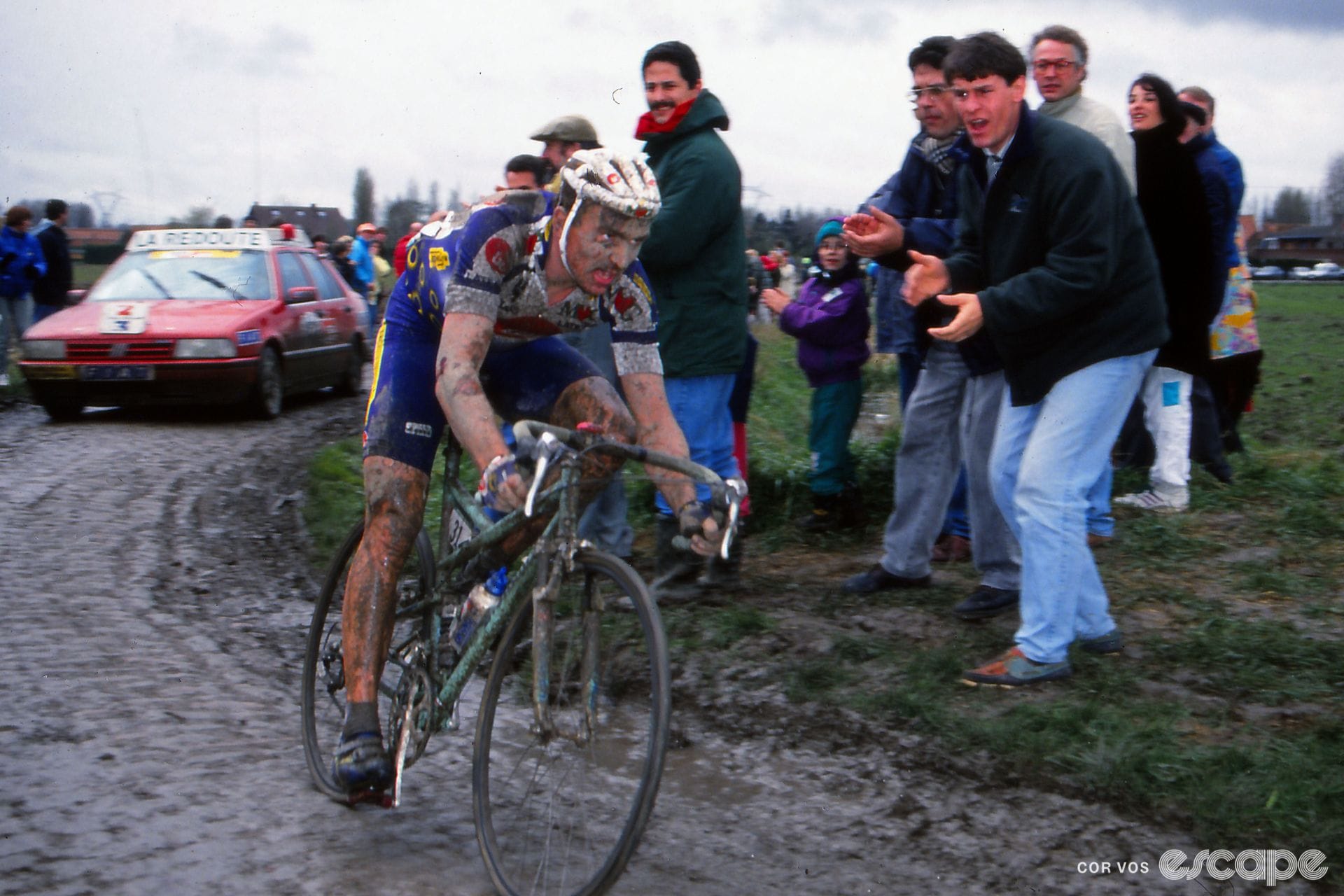
The mid-90s saw the peak of Roubaix specialism. Johan Museeuw rode Bianchi's full suspension bike to 14th place in a rain-soaked 1994 edition. Left photo © Bianchi
Since then, I have watched the sport evolve. The aerodynamic revolution changed how races were approached and what elements of equipment selection were valued above others. Disc brakes also changed the game, and tyres quickly ballooned to a size more befitting a cyclocross race.
The net effect is that over the course of some three decades, Roubaix bikes made a complete round trip from normal road bikes to specific creations made for a single race and back. In 2024, no Specialized-sponsored riders took to the start of either the men’s or women’s editions on the bike that shares its name with the Monument. This, paired with the clean sweep of aero bikes on the 2024 podium, is a clear sign of the times. Current Roubaix bikes share almost nothing with their forefathers of only a decade ago, and there is very little beyond a few extra millimetres of rubber, a chainring swap, and a bit of grip tape on the bottle cages that separates them from the machines used for the rest of the season.

How did we end up here? For some, myself included, Roubaix historically was more than a race; it was a tech expo of wacky and innovative solutions. With pro bikes now so capable, the jigsaw that is Roubaix no longer needs this piece to be complete. In reality, this is great for us recreational riders; it shows that road bikes have never been so capable, but from the perspective of a fan, visiting the pits at Roubaix no longer holds the wild excitement that it once did.
Looking back over the past 15 years, we can trace the evolution of Roubaix tech and its path of convergence with standard race bikes, as we have seen in recent years. In the end, it was two simple technologies that drove what we see today.
2010: Cancellara wins on carbon wheels
Carbon wheels weren’t new to the peloton in 2010. Most riders saw the merit of using ‘aero’ (or at least we thought so at the time) wheels across the season. Garmin-Sharp used them at the 2009 Paris-Roubaix with Bradley Wiggins riding to 25th place aboard a Felt equipped with Zipp 303 wheels.

Coming into the 2010 edition, the cycling world was primed for a showdown between two heavyweights of the classics, Tom Boonen and Fabian Cancellara. Before the race, there was a lot of talk about Cancellara’s decision to use Zipp 303 wheels, which was considered a risk by many, especially for a favourite. Boonen, on the other hand, stuck with tried and tested box-section aluminium rims.
We all know what happened in that race. Cancellara entered the velodrome alone after a nearly 50 km solo move, crossing the line two minutes ahead of Thor Hushovd, who was also using Zipp 303 wheels. Boonen had to settle for fifth on the day, more than three minutes in arrears to the Swissman.
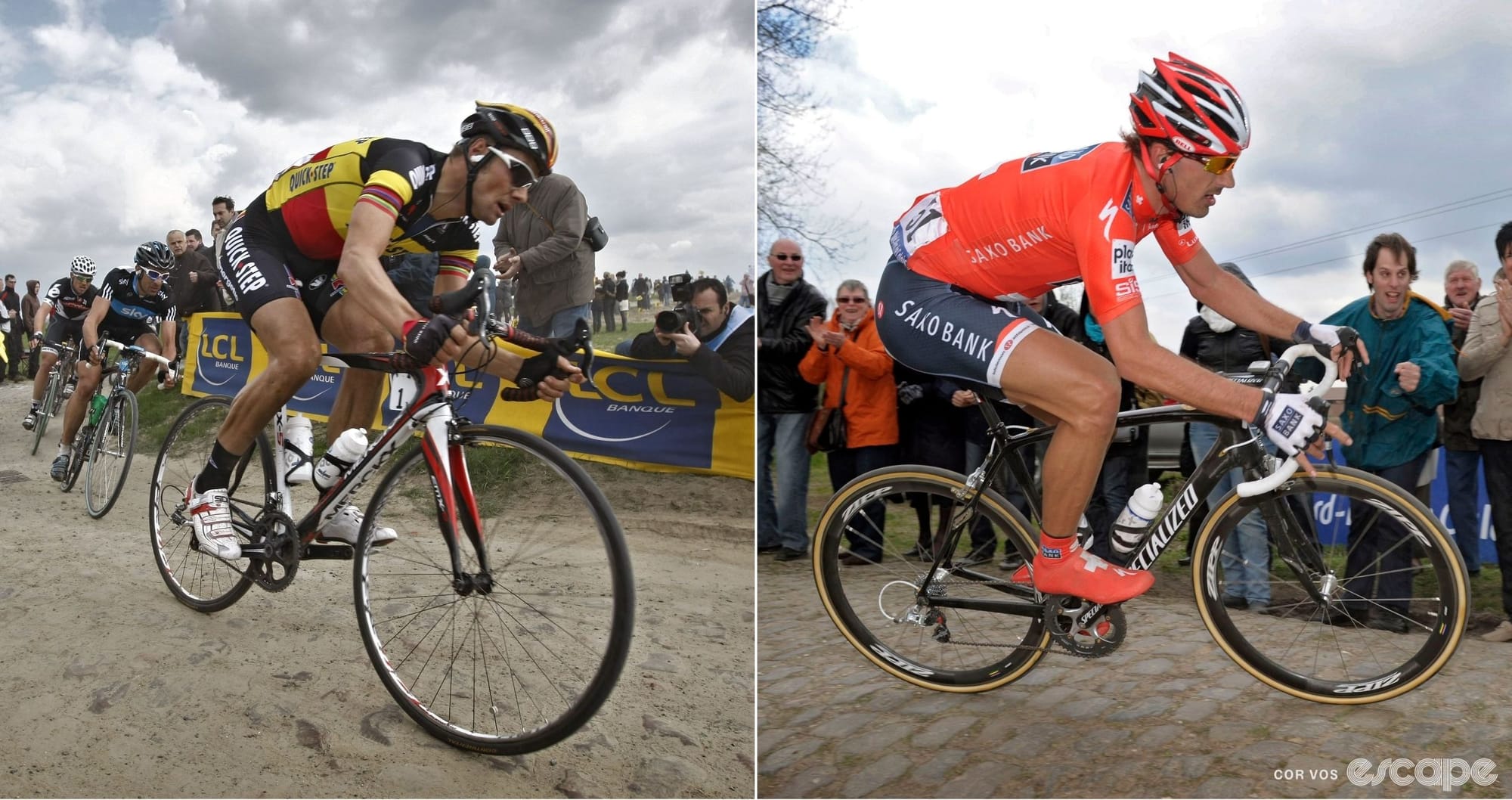
From this point forward, carbon wheels had solidified their relevance at the race, and 2011 saw a complete step change across the board to the wheels teams brought to the race. In one clean motion, the 2010 edition of the race confined the legendary Ambrosio Nemesis rims to the history books, only to be brought up in conversations about retro Roubaix tech. That, in turn, set the tone for what unfolded over the following decade and a half.
Did we do a good job with this story?

